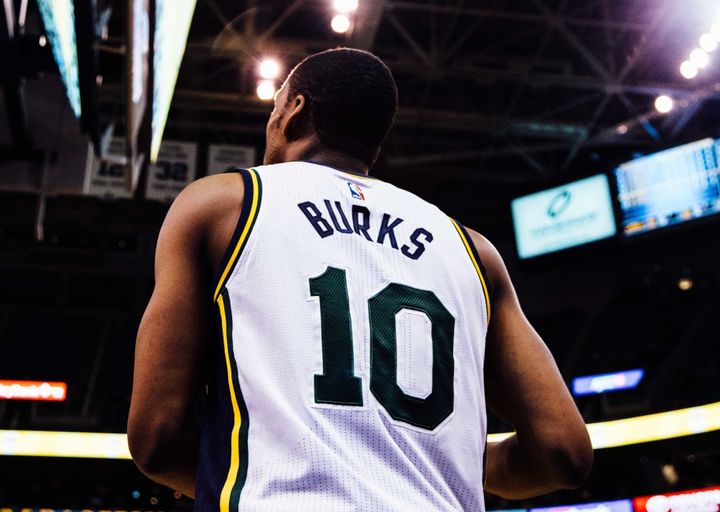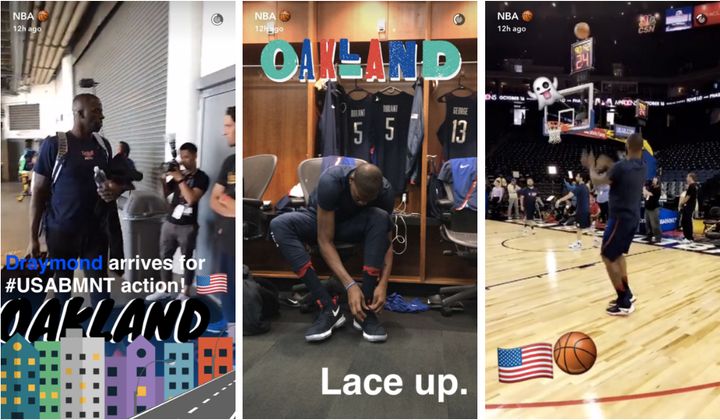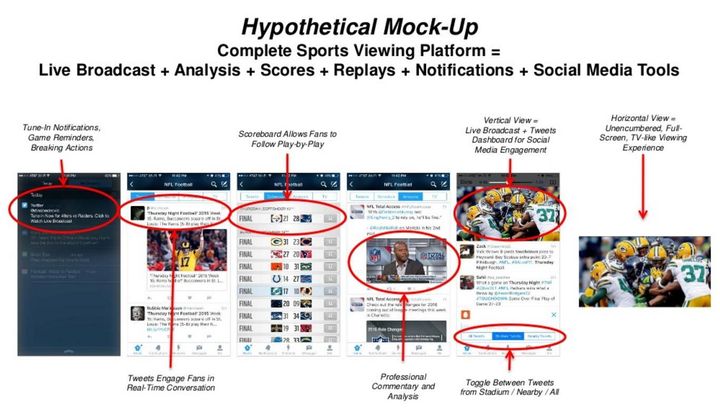
The NBA is on to something, as a recent feature in Wired pointed out.
“Sports and social media are a perfect fit for each other, combining a massive, opinionated audience with conversational technology — and no other North American sports league compares to the NBA on social. This winter, the league reached over 1 billion followers for league, team, and player accounts across the largest US platforms and on Tencent and Sina in China. Just counting official league accounts, the NBA has over 65 million followers, almost twice as many as the NFL. Major League Baseball has only 15 million. The National Hockey League has 11 million — half as many as Stephen Curry”
“Other leagues struggle with aging fans and restrictive views on intellectual property; the NBA has the youngest TV audience of any US league and lets its content flow through the wilds of the Internet. While the other US leagues struggle to build international interest in their games, the NBA has leveraged social media and new technology to build a huge global following. If the league has its way, the Golden State Warriors’ three-point-shooting machine Stephen Curry won’t be merely an ambassador for America’s most exportable sport. He’ll be the biggest star of the biggest league on the planet.” (Wired).
In this unprofessionally long quote, there are three huge points that address what digital offers sports teams and leagues.
1. Social — and digital more broadly—allows for greater fan connection. This connection is to the players, coaches, staff, teams, leagues, and other fans regardless of fan’s location. The digital experience crafted by leagues and teams then can act as an extension of and enrich what draws so many to sports: community.
Identity and community are deeply interwoven into the sport-psyche and now digital technologies allow greater access to the elements that strengthen fan attachment. By using digital touchpoints like social media and apps, brands can establish, enhance, and grow the sense of belonging fostered by sports regardless of locale to deepen the emotional connection and loyalty to a league, teams, and people (players, coaches, and staff).

Digital also provides communication channels for fans to teams and vice-versa, while also improving the live and at-home fan experience by further connecting fans to each other and to the players and organizations they are watching.
2. Social channels can attract and develop younger and global fans. As noted in Wired, the NBA has been attracting a younger fan base than other American sports leagues through a focus on digital and mobile content. This is not all that surprising as Pew reported last year that 71% of American teens are active more than one social media channel and 73% have access to a smartphone—numbers that are destine to grow.
“Adam Silver realized early on that people would tape things off the TV set and upload it to YouTube. He understood Instagram. He understood Snapchat. He gets the fact that fans are fans, and you need to fish where the fish are.” — David Levy, president of Turner
By engaging fans — and young fans in particular—where they are, the NBA is courting and developing them early and often to build a relationship with an almost limitless lifetime value.
Globally these numbers continue to grow too, as 2.6 billion people own smartphones, a figure that is predicted to become 6.1 billion by 2020. Additionally, 2.3 billion people use social media with 2 billion claiming to be active mobile social users. These trends signify the potential for greater global penetration and market share through social and mobile.
3. The live product can be exported. Again, let’s look at what the NBA is doing. Not only is the NBA leading in audience size on social media, it is also breaking new ground in the application of digital tools to enhance the fan experience.
Early in 2015, the NBA became the first major sport to embrace VR and then the first to broadcast a game in VR. This VR push is certainly an experiment, but what if it works? Would the NBA be able to bring its greatest asset — a live, courtside experience — to any fan, anywhere?
The NBA has figured out an important notion, live sporting experiences are no longer restricted to arenas and stadiums (or even TV broadcasts). Instead they can be packaged and delivered over multiple channels across the globe.
Yes, TV is still massive, just ask the Premier League, but new technology offers teams and leagues true global reach, fan connection, multiple access points, and a better game experience beyond television.

It’s not surprising that the NBA was also one of the first leagues to sign a contract with Twitter to stream two platform-specific shows, which again grants fans access to the NBA through their smartphones wherever they may be located and whatever they may be doing.
Other sports and leagues are also following suit. Recently the US Open released a VR livestream, while the NFL has signed a contract with Twitter to stream 10 Thursday Night games, and Wimbeldon conducted the first Twitter livestream of a major sporting event last month. MLB and the NHLare also joining in with new contracts with Twitter, MLS may not be far behind, and Sky Sports announced it will share Premier League goals on Twitter as they happen.
Other teams like the Seattle Seahawks and Rangers FC have embraced 360° video technology to bring the live game experience to fans. 360° technology gives fans a chance to interactively experience parts of games and in some cases gain on-field access they would never have otherwise.
All of these trends and components came together in Mary Meeker’s recent Internet trends report. Meeker included a “complete sports viewing platform” that put live broadcast, analysis, scores, replays, notifications, social media tools all in one smartphone app.

This hypothetical app combines all of the elements of a full fan experience into one place and may very well be where things are heading.
Ultimately, sports are about communities, belonging, and shared experiences, not TV and revenue. The leagues and teams that bring these experiences to people who couldn’t otherwise have them and foster deeper emotional connections to their brands are the ones that will continue to grow into the future.
Although the examples here are of the world’s largest leagues, the same principles can apply to the smaller teams and leagues. In the global market that exists today the way forward is not through static and exclusive, but instead immersive experiences, greater access, enhanced experiences, and the cultivation of community.
I’d be remiss if I did not take a look at my own club, Hibernian FC, and their digital efforts. Living in the United States, I am geographically separated from the team I support and at that, they are not one of the large clubs with a huge international following.
This past year though, Hibs have dedicated efforts to growing digitally with an increased social presence, videos, themed campaigns, live game broadcasts, and email marketing.

These efforts became even more successful when club won its first Scottish Cup in 114 years. By having the digital infrastructure in place, Hibs were able to capitalize on the on-pitch success to connect with the supporter community. I was able to follow along and feel like part of the celebrations in Edinburgh through Facebook Live and Snapchat — and the same goes for before, during, and after matches.
Feeling part of the community, I am compelled to donate and purchase a team item every year — and it seems I’m not the only one.
The additional results of these efforts to connect with fans digitally from Hibs are monumental for a club going through a rough patch. These results would’ve been almost inconceivable less than 10 years ago regardless and herein lies the power of new technologies for sporting brands.
A version of this article originally appeared on jayshemenski.com.
